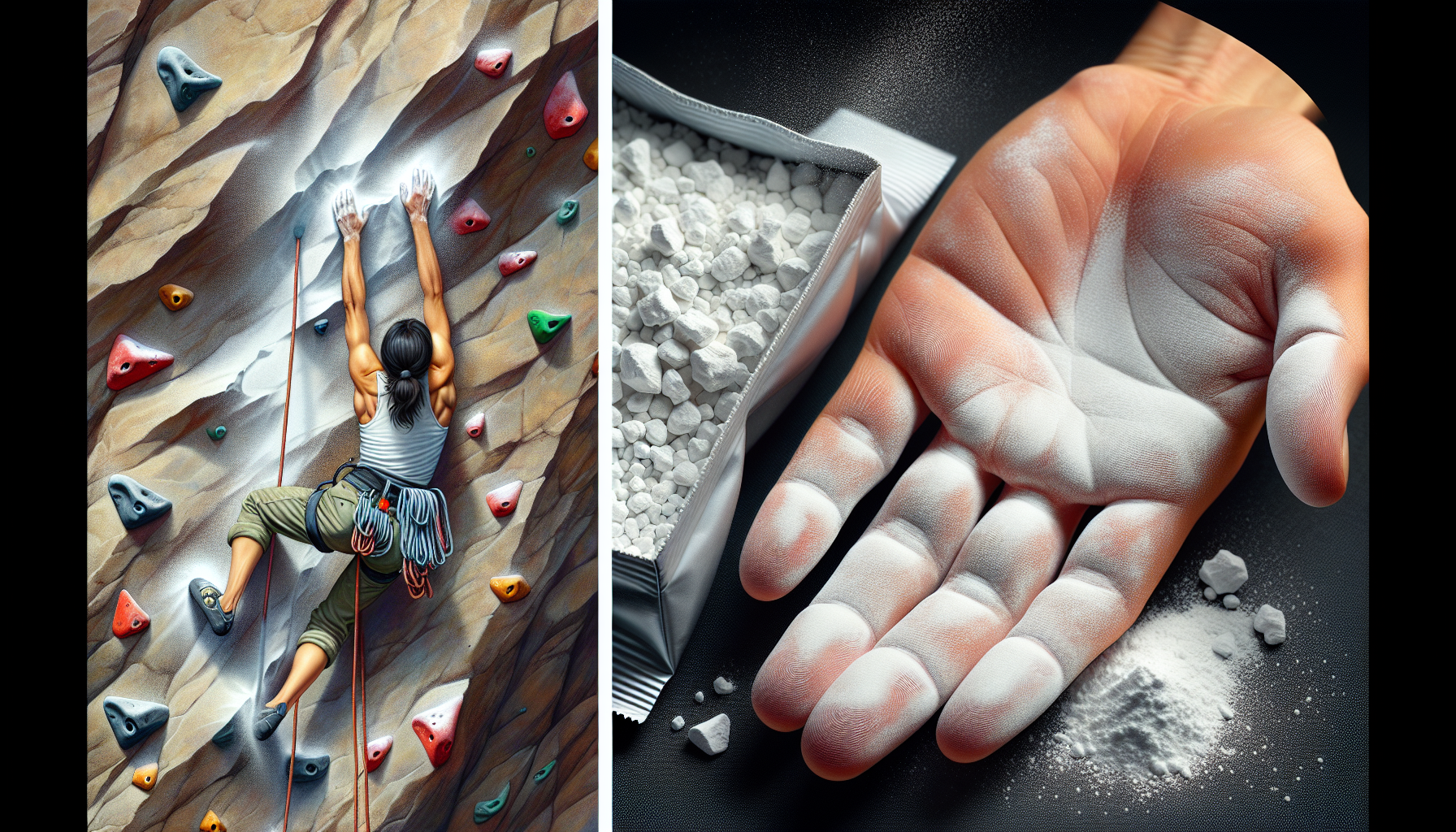The Comprehensive Guide to Climbing Chalk
When it comes to rock climbing, every detail matters from the strength of your grip to the precision of your foot placement. One essential tool that climbers rely on to enhance their performance is climbing chalk. This seemingly simple white powder plays a crucial role in keeping hands dry and improving friction between skin and rock surfaces. In this comprehensive guide, we will delve deep into the world of climbing chalk, exploring its history, composition, uses, and the science behind its effectiveness.
The History of Climbing Chalk
Before the advent of climbing chalk, climbers used various methods to keep their hands dry and improve grip on rock surfaces. In the early days of rock climbing, climbers would often dust their hands with substances like flour, rosin, or even chalk from gyms or billiard halls. However, these makeshift solutions were not always effective and could leave residues on the rock, impacting its natural beauty and texture.
The modern form of climbing chalk that we know today was popularized by American climber John Gill in the 1950s. Gill, known as the “father of modern bouldering,” experimented with different types of chalk to improve his grip while climbing. He eventually settled on magnesium carbonate, a fine white powder that absorbs moisture and reduces sweat on the hands. This innovation revolutionized the world of climbing and soon became an essential accessory for climbers of all levels.

The Science Behind Climbing Chalk
At its core, climbing chalk is made of magnesium carbonate, a naturally occurring mineral that is processed into a fine powder for use in climbing. The primary function of climbing chalk is to absorb moisture and sweat from the hands, creating a dry surface that enhances friction between the skin and the rock.
When climbers sweat, the moisture on their hands can reduce friction and lead to slipping, compromising their grip and stability. By applying climbing chalk to their hands, climbers create a barrier that absorbs excess moisture, allowing them to maintain a secure grip on holds and surfaces. The friction-enhancing properties of climbing chalk are essential for precision movements and challenging climbs where every fingertip matters.
Additionally, climbing chalk can also prevent the formation of blisters and calluses on the hands by reducing friction and minimizing rubbing against rough surfaces. This can be particularly beneficial for climbers who spend long hours on the rock or face extended climbing sessions.
Types of Climbing Chalk
There are several types of climbing chalk available on the market, each with its unique properties and characteristics. The two main categories of climbing chalk are loose chalk and chalk balls.
Loose Chalk
Loose chalk is the most common form of climbing chalk and is typically sold in a powdered or chunky form. Climbers can apply loose chalk directly to their hands by dipping them into a chalk bag or using a chalk ball to distribute the powder evenly. Loose chalk is versatile and allows climbers to control the amount of chalk they use based on their preferences and climbing conditions.
Chalk Balls
Chalk balls are a more compact and less messy alternative to loose chalk. Chalk balls are small mesh bags filled with powdered chalk that climbers can squeeze to release a controlled amount of chalk onto their hands. Chalk balls are convenient for climbers who prefer a cleaner application method and want to avoid excess chalk dust in their gear or climbing environment.
Using Climbing Chalk Effectively
While climbing chalk is a valuable tool for enhancing grip and reducing sweat, using it effectively requires some knowledge and practice. Here are some tips for using climbing chalk efficiently:
Apply Chalk Sparingly
It’s essential to use climbing chalk judiciously and avoid over-chalking your hands. Excessive chalk can create a thick layer on your skin, reducing sensitivity and dexterity when gripping holds. Instead, apply a thin, even layer of chalk to your hands and reapply as needed during climbs.
Keep Chalk Bag Handy
Make sure to keep your chalk bag within easy reach while climbing to quickly reapply chalk when necessary. Many climbers attach their chalk bags to their harness or waist belt for easy access during climbs. Having quick access to chalk can help maintain a secure grip and confidence on challenging routes.
Brush Holds Clean
Before applying chalk to your hands, it’s a good practice to brush holds clean of excess chalk or debris. This not only improves the effectiveness of your chalk but also helps preserve the texture and quality of the rock for future climbers. Carry a small brush in your climbing gear to clean holds before each attempt.
Store Chalk Properly
To ensure the longevity and effectiveness of your climbing chalk, store it in a cool, dry place away from moisture and direct sunlight. Proper storage helps prevent clumping and maintains the consistency of the chalk for optimal performance. Invest in a chalk bag or container that offers protection and easy access to your chalk during climbs.
Expert Opinions on Climbing Chalk
Many professional climbers and coaches have shared their insights and opinions on the use of climbing chalk in the sport. Renowned climber Alex Honnold, known for his daring free solo ascents, emphasizes the importance of chalk in maintaining grip and confidence on challenging routes. He recommends using chalk strategically to enhance performance without relying on it as a crutch.
In an interview with Rock and Ice magazine, climbing coach and author Eric Hrst discusses the role of climbing chalk in managing sweat and improving grip during climbs. He highlights the importance of proper chalk application and technique in maximizing the benefits of chalk for climbers of all levels.
Common Misconceptions About Climbing Chalk
Despite its widespread use in the climbing community, there are some common misconceptions about climbing chalk that are worth addressing:
Chalk Makes Holds Slippery
One common misconception is that climbing chalk can make holds slippery, especially on indoor climbing walls. While excess chalk residue on holds can reduce friction, proper brushing and maintenance can prevent this issue. Using chalk responsibly and cleaning holds regularly can help maintain the integrity of the climbing surface and ensure a safe and enjoyable climbing experience.
Chalk Is Harmful to the Environment
Another misconception is that climbing chalk can harm the environment, particularly in outdoor climbing areas. While some types of climbing chalk may contain additives or drying agents that are not environmentally friendly, many brands now offer eco-friendly and sustainable chalk options. Choosing environmentally conscious climbing chalk can help minimize the impact on natural rock formations and ecosystems.
FAQs About Climbing Chalk
Q: Is climbing chalk the same as regular chalk?
A: While climbing chalk and regular chalk share similar properties, climbing chalk is specifically formulated for use in rock climbing to absorb moisture and improve grip. Regular chalk may not provide the same level of friction and performance as climbing chalk.
Q: Can I use climbing chalk for other sports or activities?
A: Climbing chalk can be used for a variety of sports and activities that require a dry and secure grip, such as weightlifting, gymnastics, and pole dancing. However, it is essential to consider the specific requirements of each activity and choose the appropriate type of chalk for optimal performance.
To Wrap Things Up
Climbing chalk may seem like a small and simple accessory, but its impact on climbing performance and safety is significant. By understanding the history, science, and effective use of climbing chalk, climbers can enhance their grip, confidence, and overall climbing experience. Whether you’re a seasoned pro or a beginner, incorporating climbing chalk into your climbing gear can make a world of difference in your ability to tackle challenging routes and push your limits on the rock.




